Yielding symbolic depth, the number 4 in the Bible hints at divine order—discover its profound implications and mysteries within.
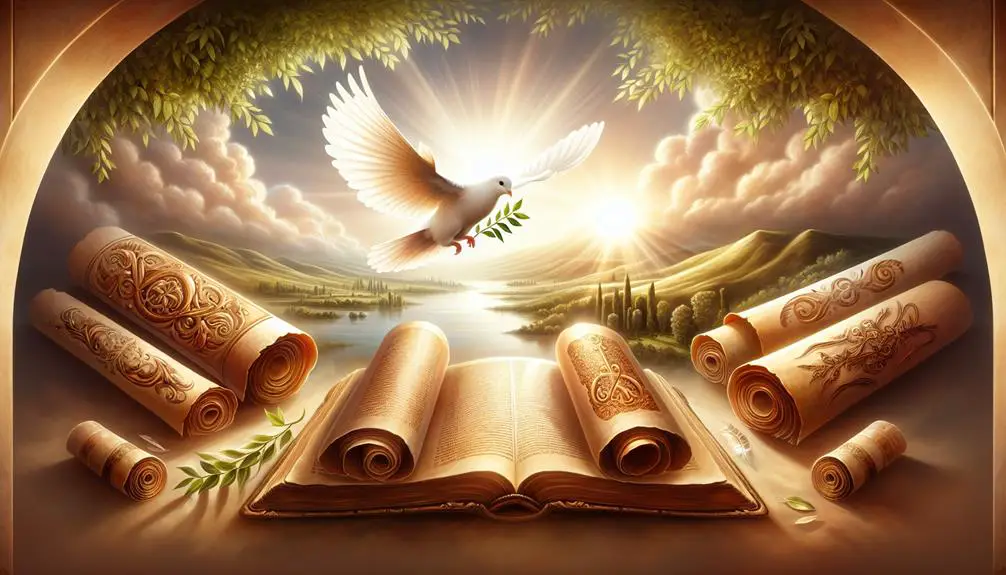
Significance of the Number 4 in the Bible
In the intricate tapestry of biblical numerology, the number 4 holds a place of significance that warrants a closer examination. It recurrently appears within contexts that range from the Creation and the cosmos, encapsulating the four rivers of Eden and the four cardinal directions, to the eschatological symbols of the four living creatures and the four horsemen.
This number's prevalence suggests an underlying structure to the biblical narrative, hinting at a divine order in the natural and spiritual realms. As we explore these instances, one cannot help but ponder the depth of symbolism and its implications for our understanding of the sacred texts.
Key Takeaways
- The number 4 symbolizes completeness, linking human and agricultural cycles to the cosmos's structure.
- Four Rivers of Eden emphasize themes of provision, transformation, and sustaining life, reflecting divine abundance.
- Cardinal directions, represented by the earth's four corners, guide spiritual practices and underline the world's interconnectedness.
- Biblical narratives, like the four living creatures and the Four Horsemen, illustrate the number 4's theological significance and cultural impact.
Creation and the Cosmos

In the context of biblical numerology, the number 4 often symbolizes completeness and universality, a concept that is intricately linked with the Creation narrative and the cosmic order established in the early chapters of Genesis. This numerological significance is not arbitrarily assigned but is deeply embedded in the text's portrayal of the universe's structure and the deliberate design behind its creation. The number 4 echoes the meticulous arrangement of the cosmos, including the celestial bodies and their governance of time and seasons, which are foundational to human existence and the agricultural cycle.
The Creation narrative meticulously outlines the establishment of a cosmic order, where star patterns serve not only as markers for days, seasons, and years but also as symbols of the divine orchestration of the universe. These patterns are central to understanding the ancient worldview, wherein the heavens were a canvas depicting the majesty and orderliness of the divine. The recurrence of the number 4 in this context—such as in the four cardinal points, which are often associated with the four winds of heaven, and the division of time into four distinct seasons—reinforces the notion of a harmoniously structured universe, governed by laws set in place by a higher power.
Analytically, the emphasis on star patterns and cosmic order in the Creation narrative, through the lens of the number 4, serves to underscore a universe that is not chaotic or arbitrary but is characterized by order, predictability, and divine intentionality. This not only reflects a profound appreciation for the natural world but also situates humanity within a larger, divinely ordained cosmic order.
Four Rivers of Eden

Within the biblical narrative, the Four Rivers of Eden not only serve as a geographical marker but also embody profound theological and symbolic significances.
The identification of these rivers has been a subject of both historical and exegetical inquiry, suggesting a link between terrestrial landscapes and divine paradigms.
Exploring these rivers opens avenues for understanding the intricate relationship between sacred texts, symbolism, and the conceptualization of sacred spaces within the Judeo-Christian tradition.
Eden's Rivers Identified
The identification of the Four Rivers of Eden, as described in the biblical narrative, has long intrigued scholars and theologians, presenting a complex interplay between ancient texts and geographical realities. The quest to pinpoint these rivers' sources and their modern locations has yielded various theories, all aiming to bridge scriptural accounts with contemporary geographical knowledge.
- Pishon and Gihon: Often linked with regions rich in gold and onyx, scholars speculate these rivers might correspond to watercourses near the Arabian Peninsula.
- Tigris and Euphrates: These are more readily identifiable, with their sources in the mountains of Turkey and flowing through modern Iraq, underscoring a blend of historical and geographical consistency.
This pursuit harmonizes scriptural reverence with a thirst for historical and geographical accuracy, enriching our understanding of ancient narratives.
Symbolic Meanings Unveiled
Exploring beyond the geographical and historical speculations surrounding the Four Rivers of Eden, it becomes imperative to unveil the rich symbolic meanings these rivers hold within biblical narratives. The numerical importance and cultural interpretations surrounding these rivers provide a profound insight into their symbolic significance.
River |
Symbolic Meaning |
Cultural Interpretation |
|---|---|---|
Pishon |
Abundance & Wealth |
Mesopotamian Prosperity |
Gihon |
Transformation & Change |
Egyptian Renewal |
Tigris |
Swift Currents, Decisiveness |
Near Eastern Strength |
Euphrates |
Fertility, Life-Giving |
Babylonian Sustenance |
These interpretations underscore the rivers' roles not just as physical entities but as metaphysical symbols that reflect the overarching themes of provision, transformation, strength, and sustenance within the biblical context and beyond, into the broader cultural landscapes.
Geography and Theology Connection
Bridging the realms of geography and theology, the Four Rivers of Eden serve as pivotal elements in understanding the interconnectedness of physical landscapes and spiritual narratives in biblical texts. This connection highlights:
- Cultural Influences: The depiction of these rivers not only delineates a sacred space but also reflects the ancient Near Eastern cultural milieu, emphasizing the role of water as a lifeline and a symbol of divine provision.
- Historical Contexts: The rivers anchor the Eden narrative in a tangible geographical framework, inviting interpretations that consider historical and environmental realities of the ancient world.
- Theological Symbolism: Each river, by flowing out of Eden, symbolizes the spread of God's blessings and presence, integrating physical geography with spiritual significance and underscoring the unity of creation.
The Four Directions

Within biblical scripture, the concept of the four directions extends beyond mere cardinal points, encompassing profound spiritual and symbolic significances.
These directions are often interpreted as representing Earth's four corners, thereby suggesting a universal scope of divine presence and authority.
Furthermore, they serve as paths for spiritual guidance, each direction imbued with distinct symbolic meanings that have shaped theological discourse and ritual practices throughout Christian history.
Earth's Four Corners
The concept of Earth's four corners, often interpreted as the four cardinal directions, holds significant symbolic and literal meaning in various cultural, religious, and historical contexts. This notion has been instrumental in shaping human understanding of the world, guiding global navigation, and maritime exploration. The four directions—North, South, East, and West—have served as a foundational tool in the development of early maps and compasses, crucial for the Age of Discovery.
- Global Navigation: The division of the Earth into four parts has been essential for navigators and explorers in plotting courses across the oceans.
- Maritime Exploration: The concept of four corners provided a framework for sailors to venture into unknown territories, expanding the known world.
- Cultural Significance: Across cultures, these directions often carry symbolic meanings, influencing rituals, and architectural designs.
Spiritual Guidance Paths
Exploring the spiritual realm, the four directions have long served as a compass for spiritual guidance, anchoring various religious and mystical traditions in their search for meaning and connection.
This concept transcends mere geographical orientation to embody deeper, symbolic values integral to spiritual numerology and guidance methodologies.
By aligning practices and rituals with these cardinal directions, individuals engage with a form of spiritual numerology that ascribes distinct energies and teachings to each path.
This alignment not only facilitates a structured approach to spiritual exploration but also embeds a universal language within guidance methodologies, offering a framework through which the spiritual journey is navigated.
This interplay between the tangible and intangible, the physical and spiritual, marks the four directions as foundational elements in the quest for enlightenment and understanding within various faiths and mystical beliefs.
Symbolic Cardinal Points
Symbolic cardinal points, representing the four directions, serve as critical anchors in the framework of spiritual and religious practices, embodying profound symbolic meanings across various cultures and traditions. These directions are often linked to:
- Cardinal virtues – Each direction can symbolize a particular virtue such as wisdom, courage, moderation, and justice, framing moral compasses within spiritual contexts.
- Seasonal cycles – The cycle of seasons is intricately connected with the four directions, marking transitions and periods of growth, decline, death, and rebirth in both the natural world and human life.
- Cosmological significance – In many religious texts, the cardinal points are gateways to understanding the cosmos's structure, reflecting the order of the universe and the human journey within it.
Analyzing these symbolic associations reveals the depth of meaning the number four holds within spiritual narratives, highlighting its role in guiding moral, natural, and cosmological reflections.
The Four Living Creatures
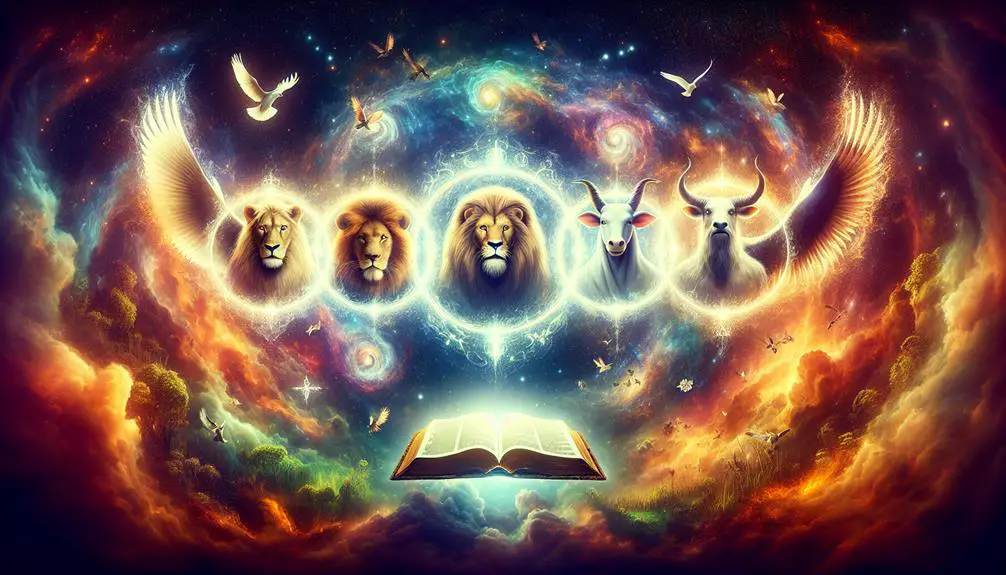
Within the rich tapestry of biblical symbolism, the depiction of the Four Living Creatures holds a pivotal role, embodying themes of divinity, order, and creation. These entities, vividly described in the books of Ezekiel and Revelation, serve as sentinels of God's throne, encapsulating both the majesty and the mystery of the divine. Their descriptions are rich with symbolic meaning, each creature representing aspects of the natural world and reflecting the omnipresence and omniscience of God.
The creatures are depicted with a combination of features: one like a lion, another like an ox, the third with a human face, and the fourth like an eagle in flight. This diverse imagery underscores their heavenly roles, highlighting the breadth of God's creation and the intricate balance within the natural order.
Creature Description |
Symbolic Representation |
|---|---|
Lion |
Majesty and Power |
Ox |
Service and Strength |
Human |
Intelligence and Reason |
Eagle |
Sovereignty and Freedom |
This tableau is not merely decorative but deeply theological, suggesting a cosmos that is both ordered and dynamic, under the watchful eyes of these celestial beings. Their presence around the throne of God signifies the all-encompassing nature of divine authority, spanning the heavens and the earth.
In analyzing the Four Living Creatures, scholars and theologians see a reflection of the fundamental principles that govern creation: unity in diversity, the interdependence of all life forms, and the continuous presence of the divine in the world. This symbolism, rooted in ancient texts, continues to inspire and challenge, bridging the gap between the seen and the unseen.
The Four Horsemen

Shifting focus to another profoundly symbolic quartet in biblical literature, the Four Horsemen emerge as harbingers of the eschatological themes depicted in the Book of Revelation. This enigmatic group comprises four figures riding horses of different colors, each symbolizing distinct aspects of the apocalyptic prophecy. Their appearance in the scripture has been a subject of extensive theological study and has significantly influenced cultural narratives and apocalyptic interpretations across various mediums.
The roles and symbolism of the Four Horsemen can be outlined as follows:
- The White Horse, ridden by a figure often interpreted as Conquest or Pestilence, symbolizes the spread of disease or divine judgement.
- The Red Horse signifies War and bloodshed, with its rider granted the power to take peace from the earth.
- The Black Horse represents Famine, with scales in hand to measure the scarcity of food and the imbalance in wealth.
- The Pale Horse, ridden by Death, is followed by Hades and symbolizes the ultimate consequence of the other calamities: death and the afterlife.
These figures encapsulate the fear and fascination with the end times, weaving a complex narrative of divine judgement and redemption. The cultural impacts of the Four Horsemen are vast, inspiring artworks, literature, and even influencing interpretations of real-world events. Scholars and theologians alike delve into the apocalyptic interpretations, seeking to understand the deeper meanings behind these symbols and their relevance to both ancient and contemporary eschatology.
Sabbath: The Fourth Commandment

Turning our attention from the apocalyptic imagery of the Four Horsemen, we now explore the profound significance of the Sabbath as encapsulated in the Fourth Commandment, a cornerstone of Judeo-Christian ethical and spiritual observance. This commandment, which enjoins believers to remember and keep the Sabbath day holy, underscores the theological and moral fabric interwoven throughout the biblical narrative.
The concept of Sabbath, deeply rooted in creation theology, signifies a divinely ordained period of rest. It is reflective of God's rest on the seventh day after the work of creation, as documented in Genesis, thereby establishing a pattern for human behavior centered around rest principles. This rhythm of work and rest not only highlights the importance of physical and spiritual rejuvenation but also serves as a reminder of God's sovereignty and the human need to acknowledge this through ceasing from labor.
Sabbath practices, as outlined in biblical texts, encompass a range of observances from cessation of work to communal worship and acts of mercy. These practices are not merely ritualistic but are imbued with deep spiritual significance, fostering a sense of community, reflection, and connection with the divine. The observance of the Sabbath, therefore, transcends mere rest, encapsulating principles of holiness, liberation, and renewal.
In the broader biblical context, the Fourth Commandment's emphasis on Sabbath rest mirrors the larger scriptural narrative of redemption and God's covenantal relationship with humanity. It serves as a testament to the integral role of rest principles in fostering spiritual well-being and ethical living, underscoring the Sabbath's enduring relevance in Judeo-Christian tradition.
Four Gospels: The Good News
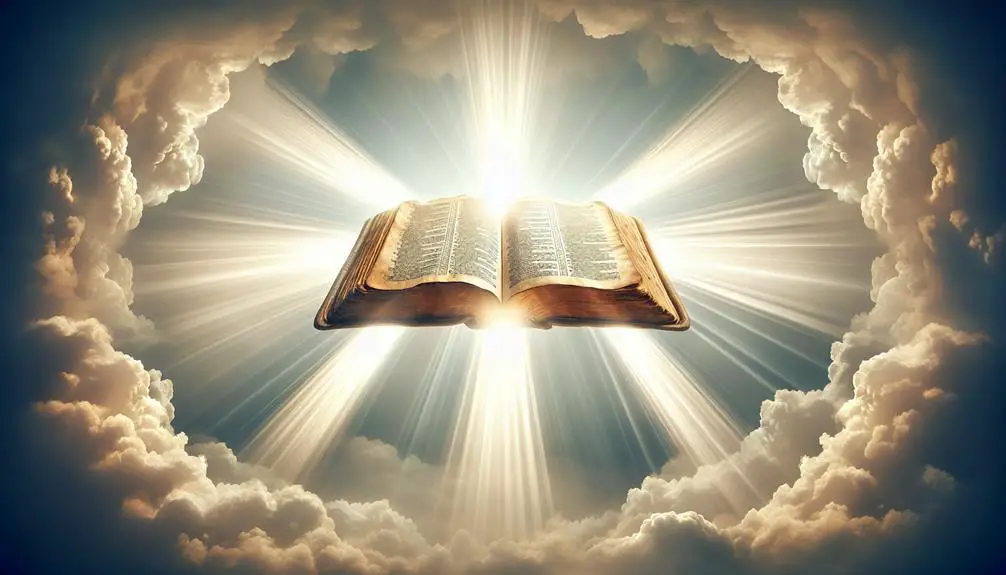
The Four Gospels, Matthew, Mark, Luke, and John, serve as the foundational narratives of the New Testament, collectively offering a multifaceted portrait of the life, teachings, death, and resurrection of Jesus Christ. These texts, penned by four distinct Gospel authors, converge to form a comprehensive account that has been pivotal for Christian doctrine and faith. Their collective significance is underscored by their inclusion and order in the New Testament, which in itself may reflect the symbolic importance of the number four in biblical numerology as a representation of universality and completeness.
In analyzing the Four Gospels, several key aspects emerge:
- Distinct Perspectives: Each Gospel author offers a unique vantage point. Matthew presents Jesus as the Jewish Messiah, fulfilling Old Testament prophecies; Mark portrays him as the suffering servant; Luke emphasizes Jesus' compassion and parable teachings, appealing to a Gentile audience; and John presents a theological narrative focusing on Jesus' divinity.
- Parable Teachings: The Gospels are replete with Jesus' teachings through parables. These stories serve as a medium for conveying deep spiritual truths, illustrating the Kingdom of God in ways that are accessible and relatable to diverse audiences.
- Historical and Theological Significance: Collectively, the Gospels provide not only a historical account of Jesus' life but also lay the theological foundation for Christian beliefs about his nature, purpose, and the means of salvation.
The Four Gospels, through their complementary narratives and teachings, thus serve as the bedrock of the Christian faith, encapsulating the good news of Jesus Christ from four different yet harmonious perspectives.
Frequently Asked Questions
How Does the Number 4 Relate to the Concept of Divine Completion or Perfection in Biblical Numerology?
In biblical numerology, the number 4 is often associated with divine completion or perfection. This connection is underscored by its recurring presence in contexts that symbolize wholeness or universality.
For instance, the creation days, which are foundational to the biblical narrative of the world's origin, include significant events on the fourth day, emphasizing completion. Similarly, the four Gospel authors contribute diverse yet harmonious accounts of Jesus' life, reinforcing the theme of universality and completion.
Are There Any Significant Biblical Figures Associated With the Number 4, Outside of the Contexts Provided in the Article Sections?
In exploring significant biblical figures associated with the number 4, beyond the contexts of the provided article sections, the Four Horsemen of the Apocalypse emerge as a prominent example. These figures symbolize conquest, war, famine, and death, embodying pivotal aspects of eschatological prophecy in Revelation.
Additionally, the Creation Days narrative in Genesis exemplifies the number 4 through the establishment of the material world, further underscoring its thematic resonance within biblical literature.
How Has the Interpretation of the Significance of the Number 4 Evolved Within Christian Theology From the Early Church to Modern Times?
The interpretation of the number 4 within Christian theology has seen a nuanced evolution from early interpretations to modern perspectives.
Initially, early church fathers imbued the number with symbolic meanings tied to creation and universality, reflecting the four corners of the earth and the four cardinal virtues.
In contemporary times, scholars adopt a more analytical approach, examining historical, cultural, and textual contexts to understand its significance, thus broadening the theological discourse around this numeral.
Can the Number 4 Be Linked to Specific Biblical Prophecies or Eschatological Themes Not Covered in the Sections Mentioned?
While seemingly plucked from a divine numerical bingo, the number 4 indeed finds its way into eschatological narratives, notably through the Four Horsemen within Apocalypse imagery. This quartet, far from a celestial boy band, symbolizes themes of conquest, war, famine, and death, encapsulating a swath of end-times prophecy.
Analytically, their appearance underscores the intricate tapestry of biblical prophecy, highlighting how numbers can transcend mere value to embody profound theological motifs.
In What Ways Has the Symbolism of the Number 4 Influenced Christian Liturgy, Architecture, or Art Throughout History?
The symbolism of the number 4 has profoundly influenced Christian liturgy, architecture, and art, reflecting themes of creation, order, and universality.
This is evident in the incorporation of Four Seasons symbolism, which represents the eternal cycle of life and nature's harmony, and in the use of Quadrilateral designs in sacred architecture, symbolizing the four corners of the earth.
These elements showcase a deep integration of numerological symbolism within the Christian cultural and spiritual landscape.
Conclusion
In conclusion, the number four serves as a foundational pillar within the biblical narrative, supporting the vast canopy of spiritual and cosmological concepts.
From the rivers of Eden to the apocalyptic horsemen, this numeral underpins the structure of creation, direction, and divine revelation.
It acts as a cardinal point in the scriptural compass, guiding believers through the intricate landscape of faith and prophecy.
The number four, therefore, is not merely a figure but a cornerstone in the architecture of biblical symbolism and theology.

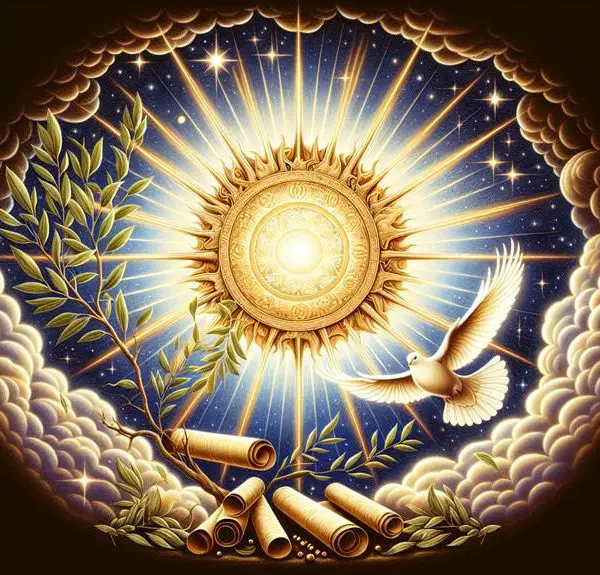
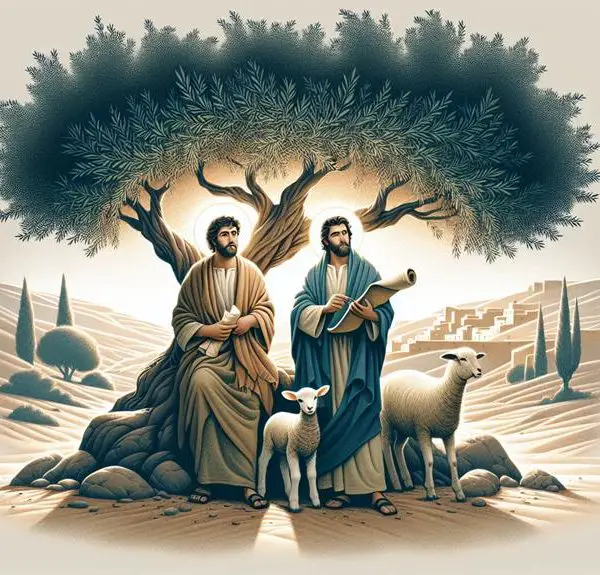
Sign up